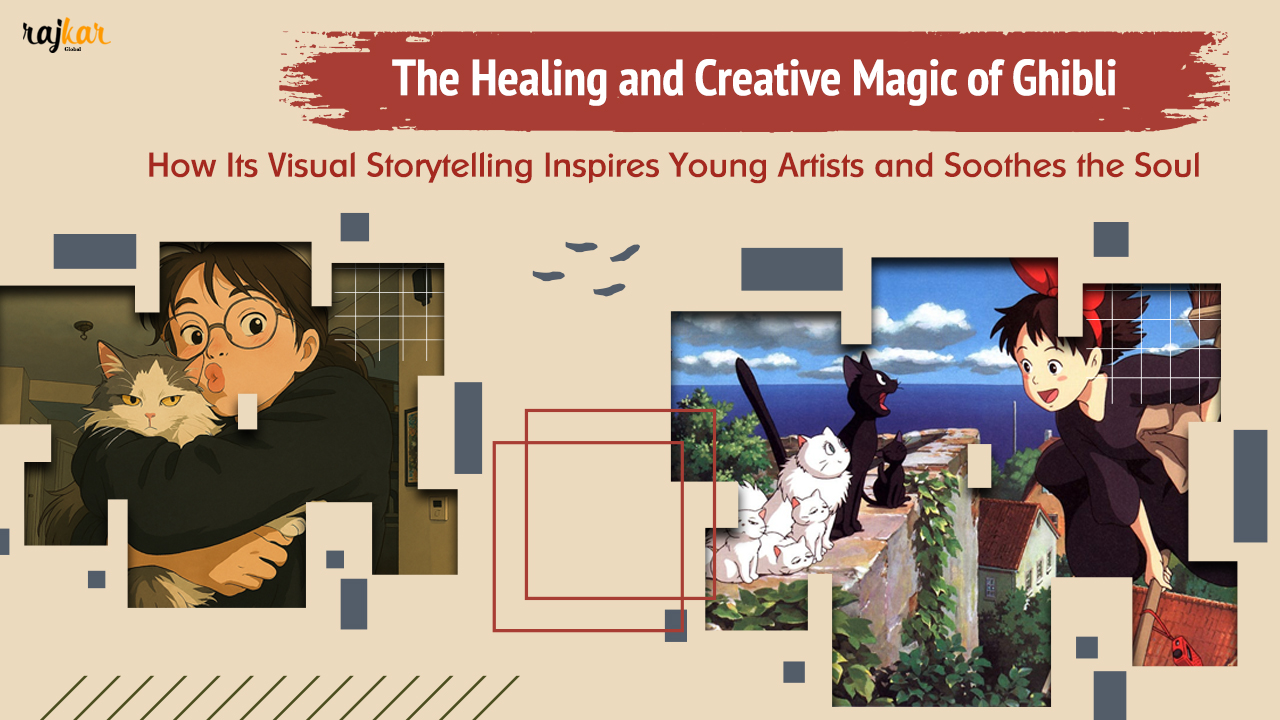Published:
April 04, 2025The Healing and Creative Magic of Ghibli
There’s something undeniably magical about a Studio Ghibli film. Whether it’s the lush, whispering forests of My Neighbor Totoro, the spellbinding skies of Howl’s Moving Castle, or the quiet melancholy of Spirited Away, the worlds that Hayao Miyazaki and his team bring to life are more than just pretty backdrops—they are deeply healing spaces. Ghibli’s art doesn’t just entertain; it restores, calms, and invites us to see the world through a lens of wonder.
A Visual Language of Calm
Unlike the fast-paced, overstimulating visuals often found in modern animation, Ghibli’s films embrace slowness. They linger. The studio is known for including scenes of “ma” — moments of stillness where characters simply exist in a space. Whether it’s Chihiro riding a train across a flooded landscape or Kiki watching the sunset after a long day, these quiet interludes allow the viewer to breathe. They mimic the natural rhythm of life, and in doing so, soothe the nervous system.
This meditative quality makes Ghibli’s art uniquely therapeutic. For many viewers, especially those experiencing anxiety or burnout, watching these films can feel like a gentle exhale—a way to return to oneself.
Nature as a Healing Force
One of the most potent aspects of Ghibli’s visual storytelling is its reverence for nature. Rolling hills, rustling leaves, glimmering rivers—all rendered with a deep sense of care and awe. In a world where people are increasingly disconnected from the natural world, Ghibli’s art gently reintroduces us to its beauty. The landscapes are not just settings—they are characters with emotional presence.
This visual celebration of nature has a grounding effect. It reminds us of the simple pleasures of wind through trees, rain on rooftops, and the quiet hum of the earth. It’s no surprise that many find these films to be a form of art therapy.
Inspiring the Next Generation of Creators
Beyond healing, Ghibli’s art also sparks something vital: imagination. For young artists, watching a Ghibli film is like stepping into a living sketchbook—every scene a masterclass in color, movement, and emotion. But what’s truly powerful is not just how beautiful the art is, but how accessible it feels. Ghibli doesn’t rely on hyperrealism or digital perfection. The textures are soft, the lines organic, the characters deeply human.
This approach invites young creators to believe that their own stories are worth telling, even if they’re quiet or strange or unpolished. It gives permission to dream.
Moreover, Ghibli’s characters are often artists in their own right—bakers, inventors, potion-makers, and painters. They create not for fame, but as a way of life. This message—that creativity is part of who we are, not just something we do—is deeply empowering for young people discovering their artistic voice.
Art as a Bridge Between Worlds
Ultimately, what makes Ghibli’s art so transformative is its ability to bridge the inner and outer worlds. It reflects the complexity of emotions while offering safe spaces to explore them. It invites both children and adults to imagine better futures, to find beauty in small things, and to remember that healing often begins with simply seeing the world differently.
In a noisy, fractured world, Ghibli’s visual storytelling is a balm and a beacon—nurturing minds, restoring hearts, and planting seeds of creativity in anyone willing to pause and look.
